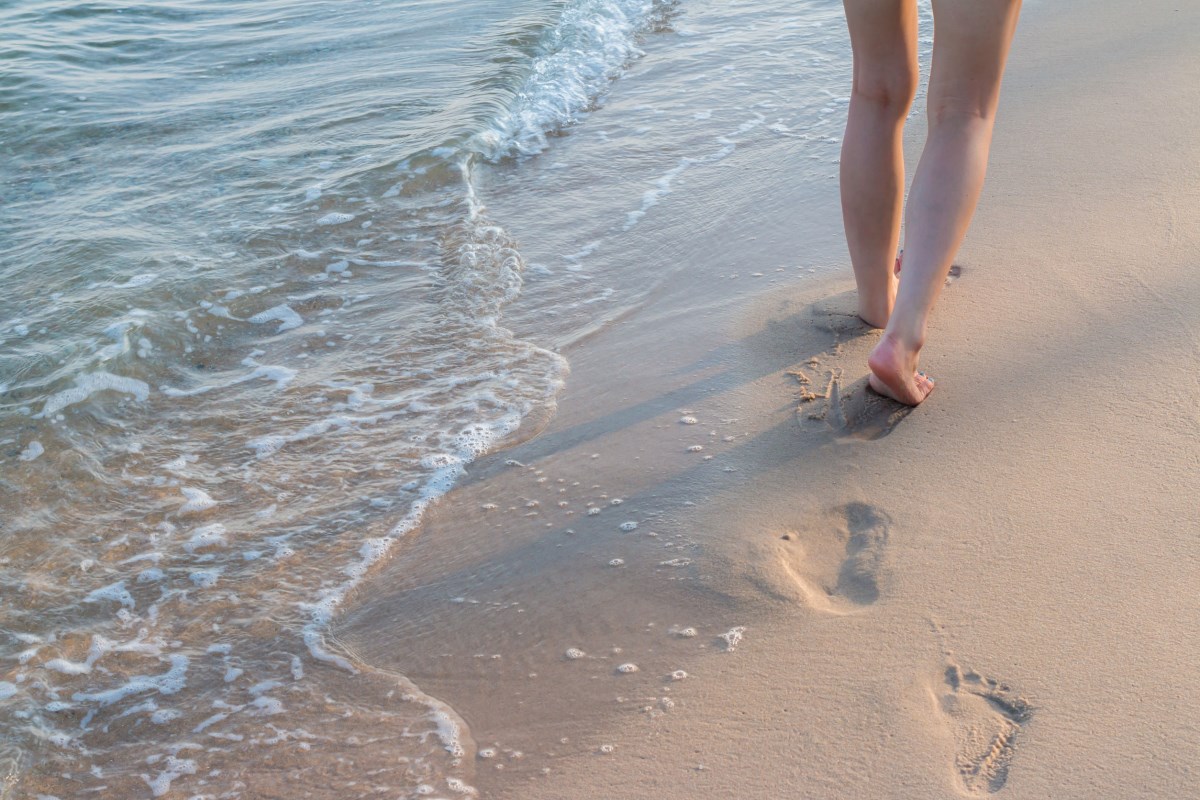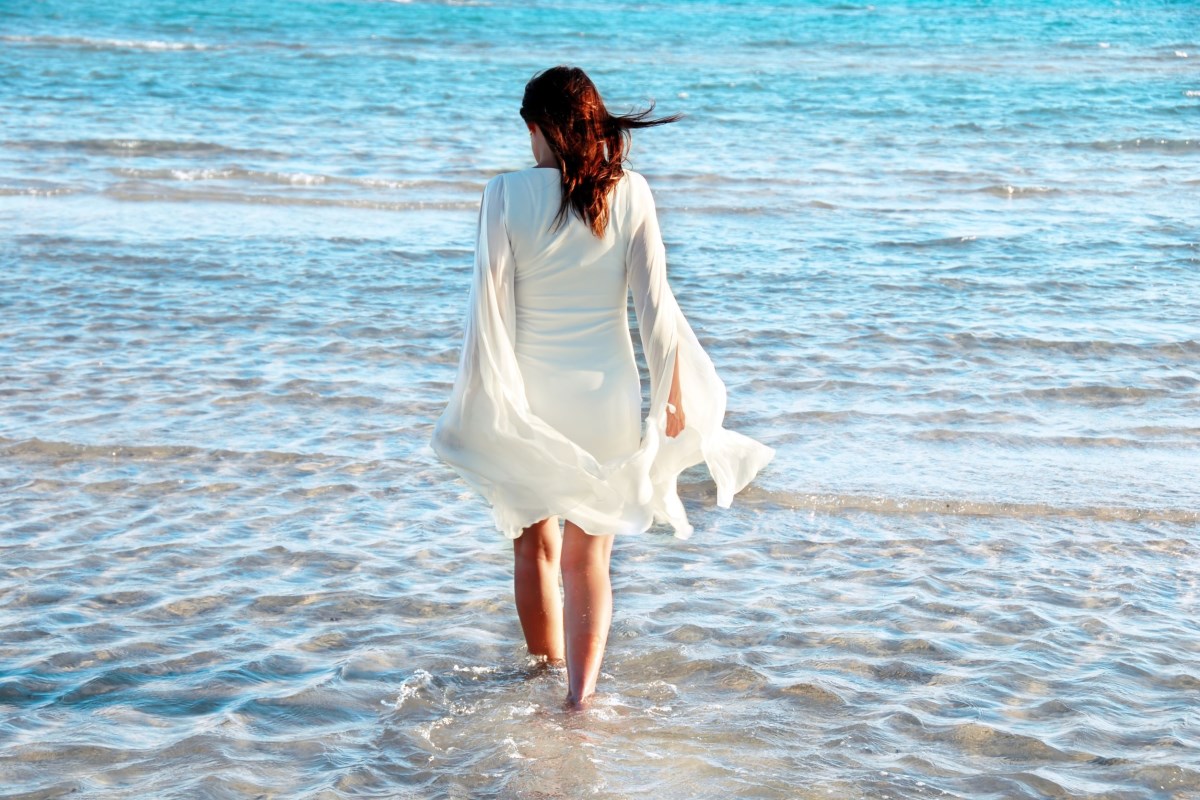Water walking is a low-impact summer workout that burns calories, tones muscles, and relieves stress — all while being gentle on your joints.

Table of contents
Is there anything better than a walk by the sea or around a pool in summer? It’s not just a relaxing ritual that clears your mind — it’s also a surprisingly effective way to stay in shape without sweating buckets or wrecking your knees. Walking in water is one of those underrated summer activities that turns out to be a powerful low-impact workout, suitable for practically everyone, regardless of age or fitness level.
Let’s dive into what makes this form of movement so beneficial and how to get the most out of it.
The surprising benefits of walking in water

@fastfun23/123rf
Water is about 800 times denser than air. This means your body has to work harder to move, even though you may not feel like you’re pushing yourself. Yet, because it’s a low-impact activity, it puts less strain on joints, making it perfect for those with bone or joint issues.
Walking in waist-deep water can burn 300–500 calories per hour, and unlike land-based cardio, you won’t feel drenched in sweat or sore the next day. In fact, it helps you:
- Burn calories and lose weight
- Boost your cardiovascular and respiratory systems
- Tone muscles, especially in the legs and glutes
- Lower blood pressure
- Fight cellulite
- Relieve stress and calm your mind

@Julija Sapic/123rf
Because of the water’s pressure, your body benefits from enhanced blood flow and lymphatic drainage, which can help reduce bloating and water retention. If you stick to it at least 2–3 times a week, you might also see improvements in your metabolism and overall energy levels.
And here’s a curious note: water resistance gives your body a full workout even if you’re just walking, meaning every small movement becomes part of your training.
Who should try water walking?
Honestly? Almost everyone.
This isn’t just an activity for fitness junkies. It’s especially suitable for people who are just starting out, or who can’t engage in high-impact sports. Among the people who can benefit the most:
- Pregnant women
- Seniors
- People with back pain or recovering from surgery
- Anyone out of shape or with conditions like osteoporosis, arthritis, or fibromyalgia
In the U.S., water-based therapy is increasingly recommended in rehab centers and senior wellness programs, especially as a way to reduce fall risk and improve balance without loading the spine or joints.
Cold or warm water? here’s how to choose
Temperature makes a difference. If your goal is to boost circulation, tone, and reduce inflammation, go for colder waters around 68–77°F (20–25°C) — perfect for sea walks in the early morning or late afternoon.
If you’re looking to relax tense muscles or support recovery, especially after injury, warmer waters in the 82–90°F (28–32°C) range (like thermal pools) are more effective. In the U.S., hydrotherapy pools for older adults often fall within this warmer range for exactly this reason.
How to walk properly in water
To truly benefit from aqua walking, posture is everything. It may feel easy at first, but doing it correctly turns it into a real full-body workout.
Start slowly, immersing yourself up to your waist. Then make sure to:
- Keep your back straight
- Lift your chin and look ahead
- Pull your shoulders back
As you move:
- Stay upright, avoiding any forward or sideways lean
- Let your arms swing naturally
- Take long steps
- Step down on your heel first, then roll through to your toes
How long should you walk to see results?
Start with 15–20 minute sessions, then gradually increase to 30–45 minutes, at least three times a week. Like most things in fitness, the key is consistency.
After just a few weeks, you may notice:
- Improved endurance
- Toned legs and glutes
- Less swelling or heaviness in the lower body
You won’t need fancy gear or complicated routines—just water, intention, and a bit of patience.
How to intensify your water walk
Once you get the basics down, you can level up your workout with small variations that increase resistance and muscle engagement.
High-knee water walking
Raising your knees while walking engages the core and glutes far more than a regular stride. The move is simple:
Raise your right knee as high as you can while lifting your left arm, then switch. It sounds basic, but in water, it becomes a whole-body challenge.
Forward lunges
Perfect for working quads, hamstrings, calves, and glutes. The water should still come up to your waist.
Step forward with your right leg, bend until your thigh is parallel to the pool floor, keeping the knee aligned with the ankle. The back leg stays straight. Then switch legs.
Want a twist? Try side lunges instead to target inner thighs more intensely.
Side steps (lateral walking)
Lateral walking is fantastic for inner and outer thigh strength, something we tend to neglect.
Face sideways, with your right leg in the lead. Step to the side with your right foot, then cross your left foot over. Keep going until you reach the end of the pool, then reverse direction.
These simple variations not only keep things interesting but also engage your stabilizing muscles, which are key for balance and joint health—especially as we age.
